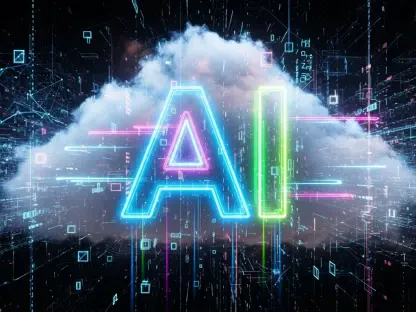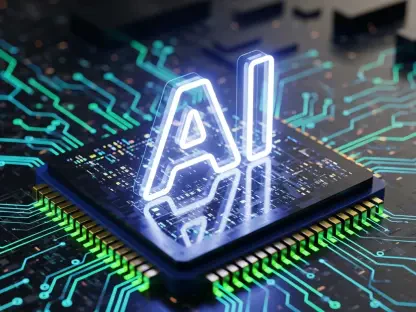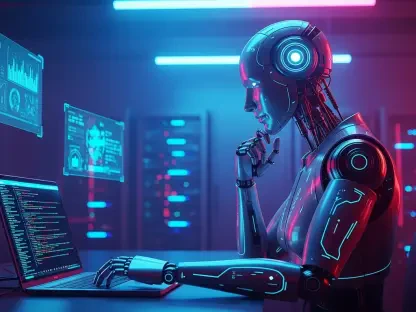The AI Revolution in Software Development
The software development landscape is undergoing a seismic shift as artificial intelligence reshapes every facet of the industry, pushing the boundaries of what is possible. With AI-driven tools now capable of generating code in minutes that once took weeks, the pace of innovation has reached unprecedented levels, challenging organizations to keep up with both opportunity and risk. This transformation is not merely a trend but a fundamental redefinition of how software is built, tested, and deployed, raising critical questions about security and governance in an era of relentless speed.
AI technologies, such as AI copilots, automated agents, and low-code platforms, have become integral to modern development environments. Major tech players are driving this wave of innovation, embedding AI into tools that enhance productivity and scalability across sectors. Yet, as adoption accelerates, the importance of robust security measures and compliance frameworks becomes undeniable, with vulnerabilities emerging from the sheer volume of code produced.
This rapid proliferation of AI demands adaptation to manage inherent risks. The industry must pivot toward strategies that balance the benefits of accelerated development with the need to protect systems from new threats. Addressing these challenges is not optional but essential for sustaining trust and stability in a technology-driven world.
Trends and Market Dynamics in AI-Driven Development
Emerging Technologies and Market Drivers
AI tools are revolutionizing software development by automating complex tasks like code generation and testing, significantly boosting productivity. Developers can now iterate faster, meeting the growing consumer demand for innovative, responsive software solutions. This shift is fueled by market drivers such as cost efficiency, which allows companies to scale operations without proportional increases in resources.
Beyond productivity, the integration of AI into DevOps practices is creating seamless workflows, enhancing collaboration between development and operations teams. Automated security solutions are also gaining traction, offering real-time threat detection within development pipelines. These advancements present opportunities for organizations to streamline processes while addressing critical safety concerns.
Consumer expectations continue to evolve, pushing for software that is not only faster but also more intuitive and secure. This dynamic environment compels businesses to adopt cutting-edge technologies to stay competitive. The convergence of AI with operational frameworks signals a broader industry move toward agility and resilience.
Market Growth and Future Projections
Current data underscores the rapid adoption of AI tools, with a significant percentage of development teams integrating these solutions into their workflows. Industry reports indicate that the market for AI-driven development platforms is expanding at a remarkable rate, with projections estimating substantial growth over the next few years from this point in 2025. Metrics such as deployment frequency highlight how AI is enabling more frequent and reliable software releases.
Looking ahead, forecasts suggest that AI will further transform the industry over the coming decade, embedding itself deeper into every stage of the software lifecycle. Analysts predict a surge in demand for platforms that combine development speed with built-in security features. This trajectory points to a future where AI is not just a tool but a core component of strategic planning.
The sustained growth of this sector reflects a broader acceptance of AI as a catalyst for innovation. As adoption rates climb, the focus will likely shift toward refining these technologies to address emerging challenges. Such insights provide a roadmap for stakeholders aiming to capitalize on these evolving dynamics.
Challenges in Securing AI-Accelerated Environments
The acceleration of code production through AI introduces a paradox: while development speed increases, so does the attack surface for potential threats. The sheer volume of code generated often outpaces manual review capabilities, creating opportunities for vulnerabilities to slip through undetected. Moreover, unpredictable AI outputs can lead to unforeseen errors, complicating risk management efforts.
Traditional security models, such as the maker-checker framework, fall short in addressing the scale and velocity of AI-driven environments. These outdated approaches rely on manual oversight, which is ill-suited to the rapid iterations characteristic of modern development. The gap between old practices and new realities necessitates a rethinking of how risks are identified and mitigated.
Potential solutions lie in adopting automated guardrails that operate in real time to intercept issues before they escalate. Scalable security systems, capable of handling vast amounts of data and transactions, are also essential. By focusing on proactive measures, such as continuous monitoring and instant remediation, organizations can better safeguard their systems against evolving threats.
Compliance and Security in the AI Era
The regulatory landscape for software development is evolving to keep pace with AI’s rapid integration, emphasizing the need for robust compliance and security measures. Frameworks like PCI DSS 4.0, NIST SSDF, and NIST CSF 2.0 are at the forefront, advocating for continuous risk management and secure practices throughout the development lifecycle. These standards provide a blueprint for organizations seeking to align innovation with accountability.
Compliance, when integrated into the software development lifecycle, becomes a driver for genuine security improvements rather than a bureaucratic hurdle. Modern approaches prioritize embedding security policies directly into development pipelines, ensuring that safety is not an afterthought. This shift fosters a culture of responsibility, where adherence to regulations enhances overall system integrity.
Automated, platform-based security solutions are redefining how compliance is managed, with coded policies and dashboards offering real-time evidence of adherence. Such tools streamline reporting and reduce human error, aligning with industry standards that demand transparency and efficiency. As these practices gain traction, they are setting new benchmarks for how security and governance intersect in the AI age.
The Future of Software Development in the AI Age
Emerging technologies, such as advanced AI automation and platform-based security systems, are poised to shape the long-term trajectory of software development. These innovations promise to further enhance productivity while addressing critical vulnerabilities through integrated safety mechanisms. The focus on automation signals a move away from manual processes toward more dynamic, responsive frameworks.
Changing consumer preferences for rapid, secure software are influencing how development practices evolve. As end-users demand quicker updates without compromising on safety, developers must prioritize solutions that deliver on both fronts. This dual expectation is likely to drive investment in tools that seamlessly blend speed with robust protective measures.
Potential disruptors, including regulatory shifts and global economic fluctuations, could challenge this progress, necessitating adaptive strategies. Innovation will play a pivotal role in overcoming such hurdles, with new metrics emerging to balance development velocity with risk mitigation. By proactively integrating security into every stage, the industry can navigate uncertainties while fostering sustainable growth.
Conclusion and Strategic Recommendations
Reflecting on the insights gathered, it became clear that systemic change is imperative to address the challenges and opportunities of AI in software development. The discussions highlighted how the unprecedented speed of code generation demanded a parallel evolution in security and compliance practices. Each analysis pointed to a pressing need for frameworks that could keep pace with technological advancements.
Moving forward, organizations should prioritize adopting continuous risk loops to ensure real-time issue interception and remediation. Embedding automated guardrails into development environments emerged as a key strategy to prevent vulnerabilities at the source. Leveraging modern compliance frameworks also proved vital in transforming regulatory adherence into a competitive advantage.
As a next step, investment in AI-driven tools paired with secure development practices offers a pathway to sustained innovation. Stakeholders are encouraged to explore scalable security platforms that integrate seamlessly with existing systems. By focusing on these actionable measures, the industry can build a future where speed and safety coexist harmoniously.









